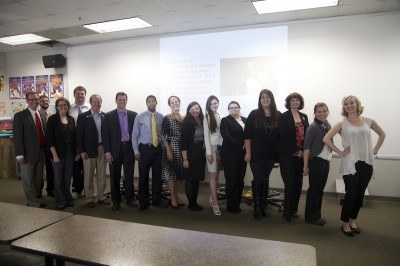Brown v. Board of Education at 60: School Choice New Frontier of Opportunity
A little over a week ago, I had the pleasure of speaking on a panel at Georgia Gwinnett College to a group of students, including some future educators, students from the school’s honors program, and a few professors, who had been reading about the impact of school choice in America and in other parts of the world.
In my remarks, I noted that Brown was successful in eliminating official, legal enforcement of segregation and paved the way for integrated schools and gains in minority student achievement. Today, we don’t find government officials claiming a legal right to physically block a child’s entrance to a school because of his or her race. By that measure, Brown hit its mark.
Instead, in 2014, what we witness is a very different kind of school segregation driven largely by the zip code in which a child lives, which is largely a function of income.
Today, children are not so much being locked out of schools they would like to attend, as much as they are being locked into schools they wouldn’t choose if given an option.
This is especially true for lower and middle-income families who likely do not earn enough to move to a district with great schools or afford the cost of private tuition.
This is where school choice is able to help.
Given control over their education dollars (over $9,000 per year per student on average in Georgia), parents and their children would have the ability to select the school best suited for their needs, whether public, private, virtual or otherwise. Since each family would be given, essentially, the same base level of purchasing power, segregation based on income (enforced now by our zip code system) would be much less of a barrier.
For areas of the state, especially in more rural communities, where the local public school may be the only option right now, giving parents control of those education dollars would likely mean entrepreneurs would soon find ways to make additional options available, as each class of students (assuming an average of 23 children) would bring with them over $200,000 of funding each year. You can pay a teacher very well and buy a lot of materials with that kind of money.
Americans value choice in all areas of life and instinctively understand that the choices we make with our money drive improvements in the products we buy, whether the product is the food we eat, the houses we live in, or the cars we drive. The same thing could be true relative to the education our children receive.
The system will improve if we are allowed to vote with our wallets. It most likely will not until then.
For more reading on the power of school choice and creative ways communities are making it possible (in the US and abroad), I highly recommend the books that the students at GGC read this year:
Education Freedom In Urban America: Brown Vs. Board after Half a Century
By: David Salisbury and Casey Lartigue Jr.
By: James Tooled
Market Education: The Unknown History
By: Andrew J. Coulson
Why America Needs School Choice
By: Jay P. Greene
